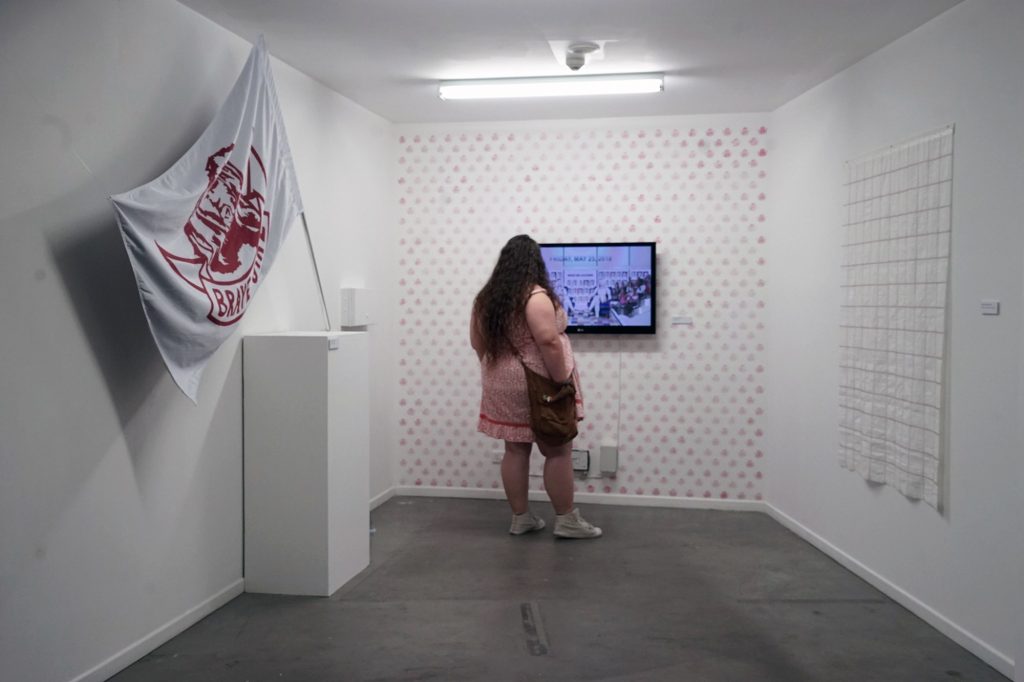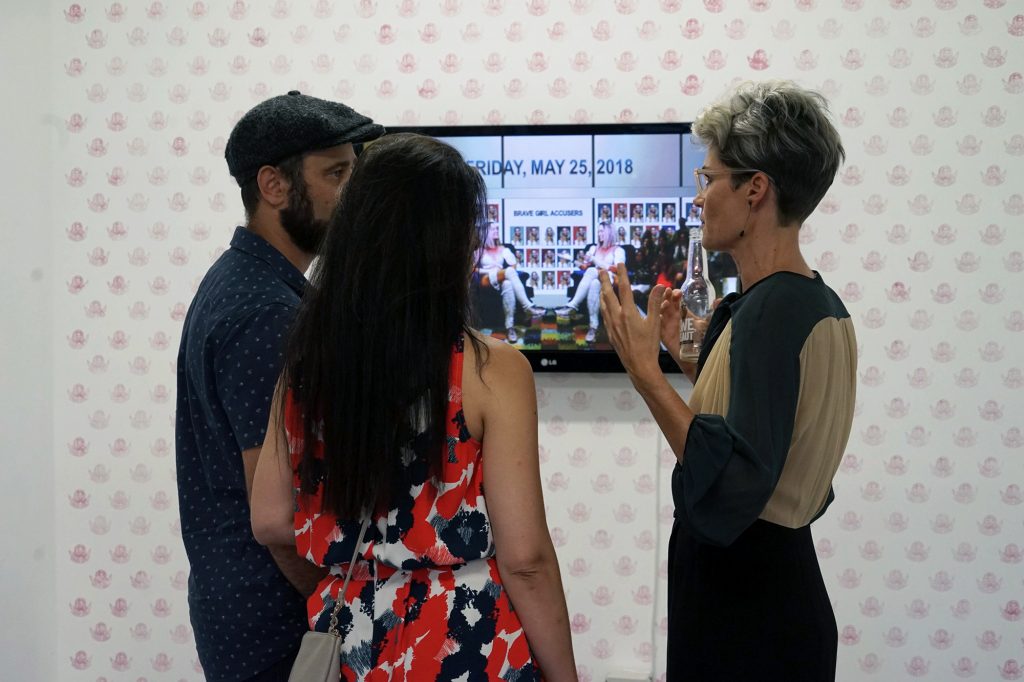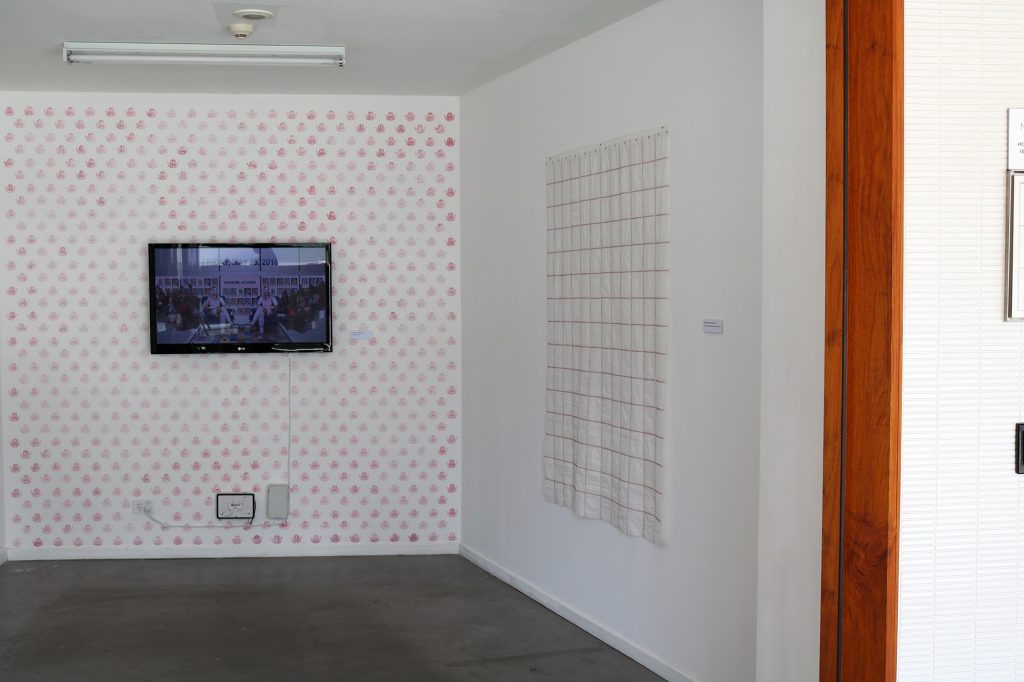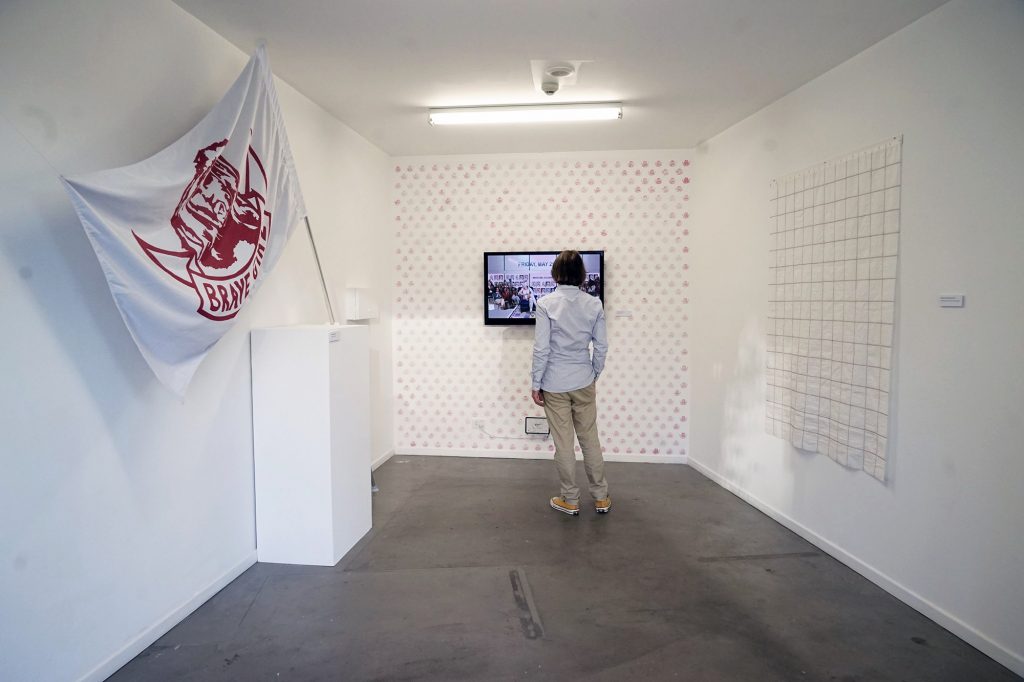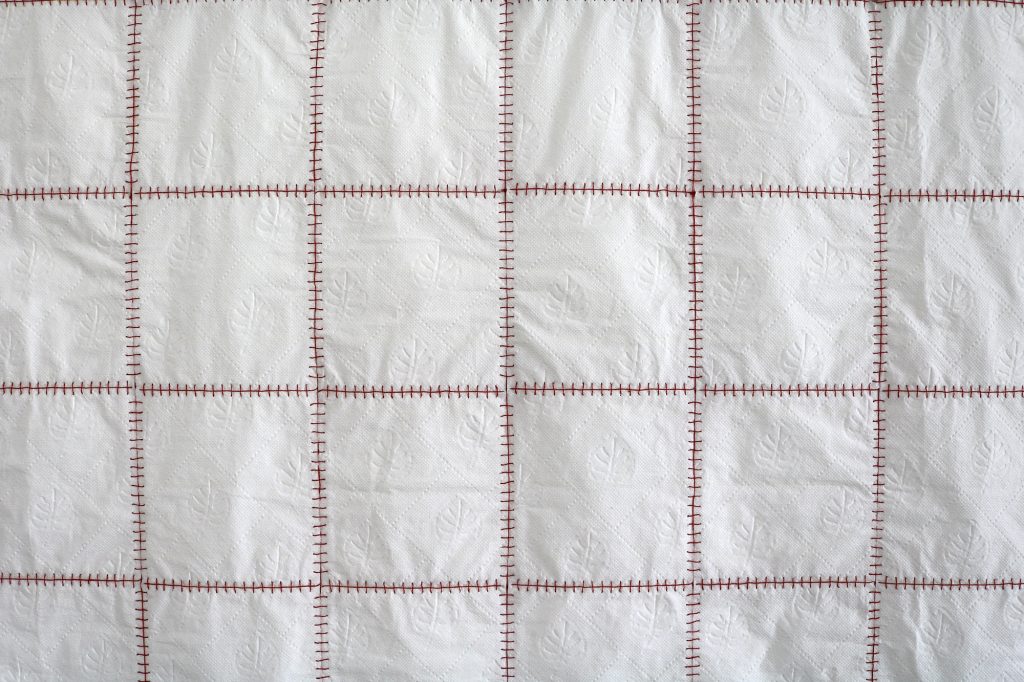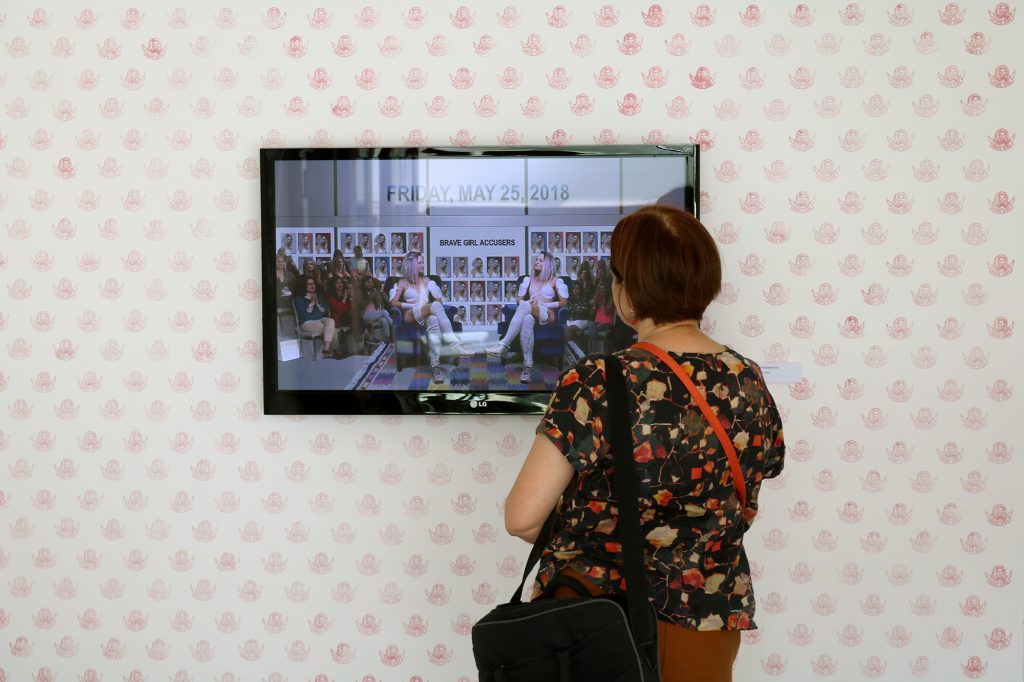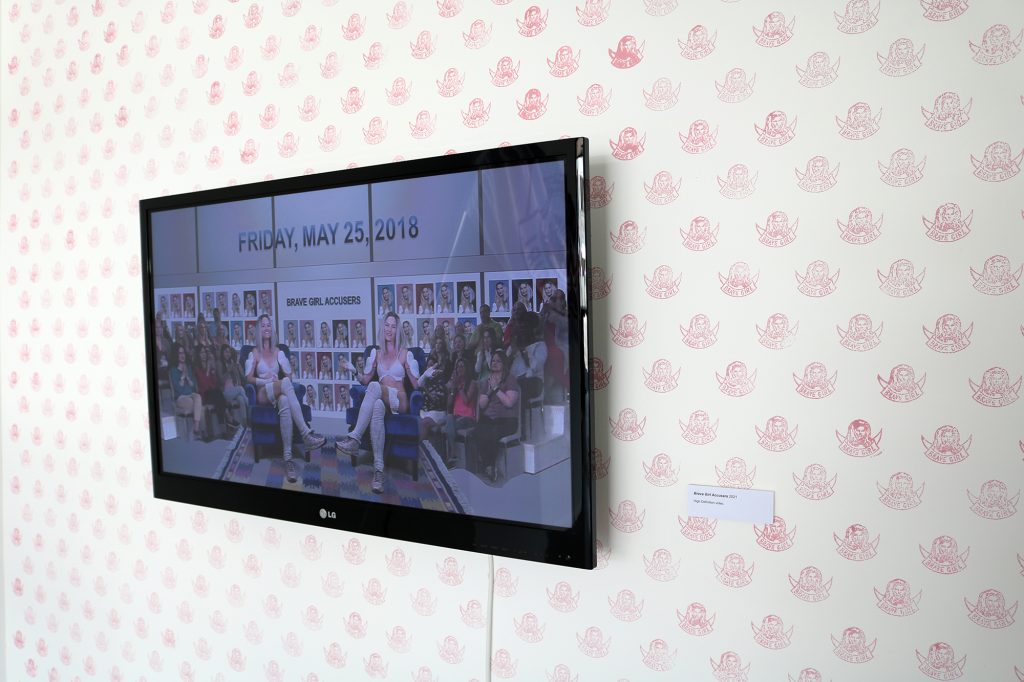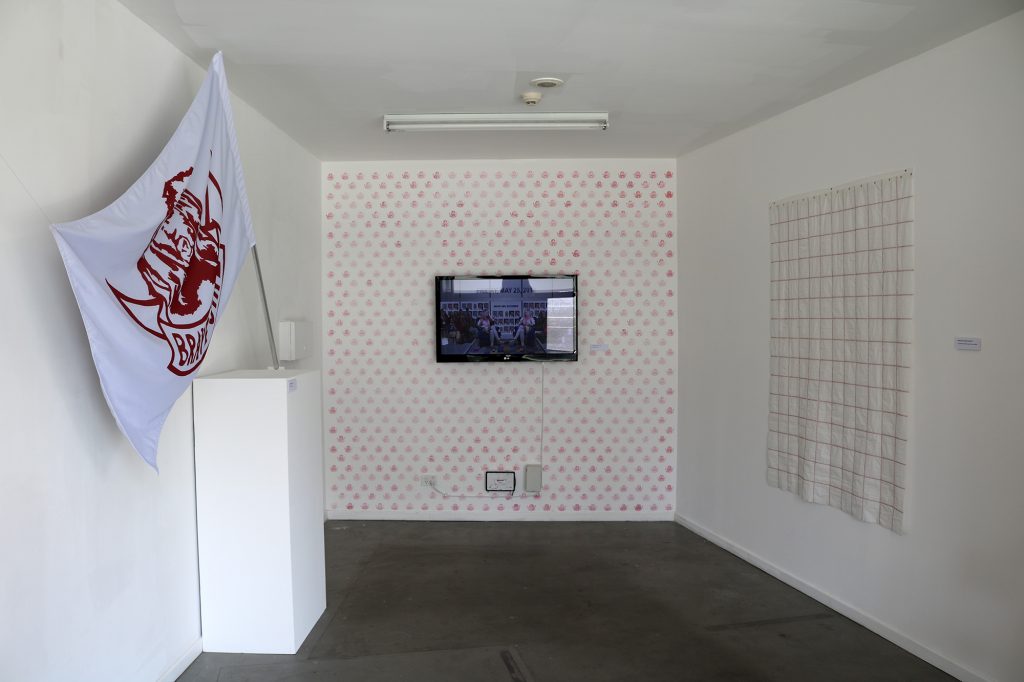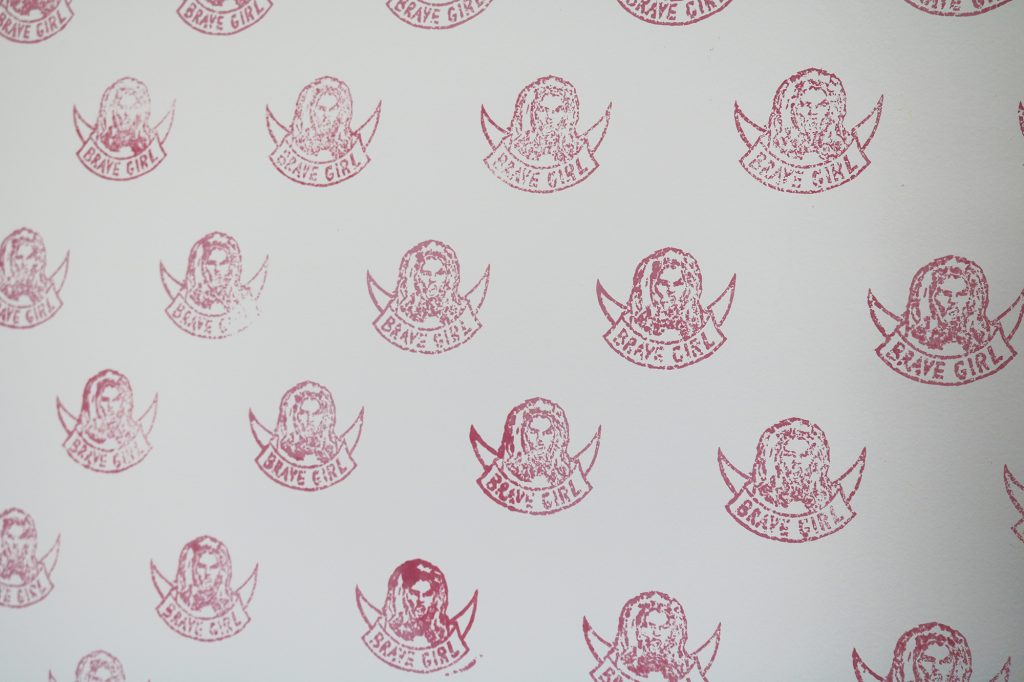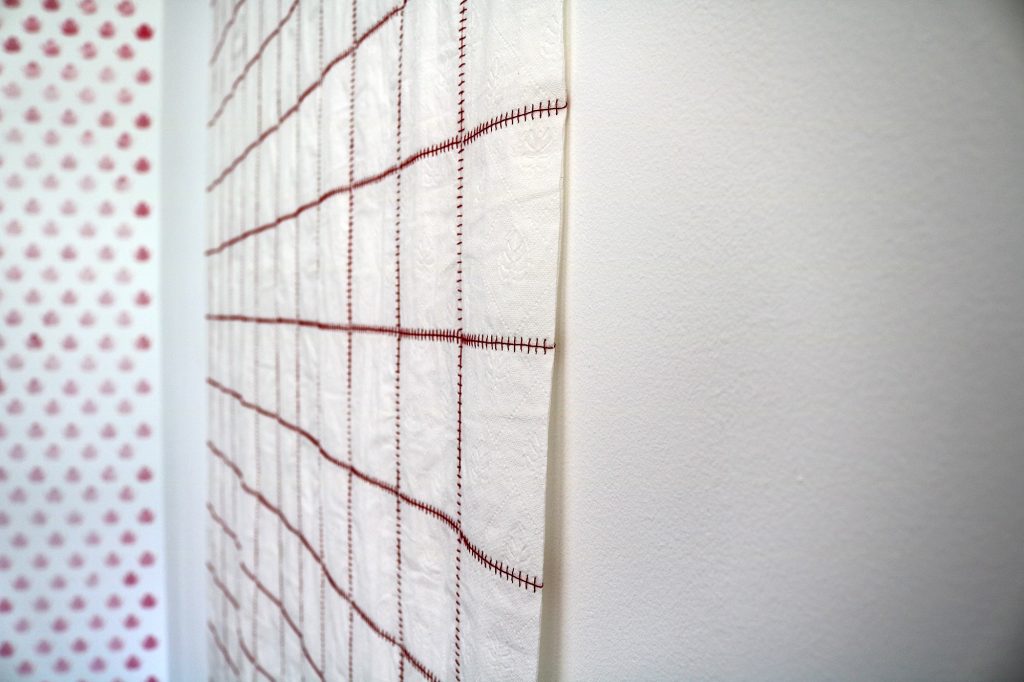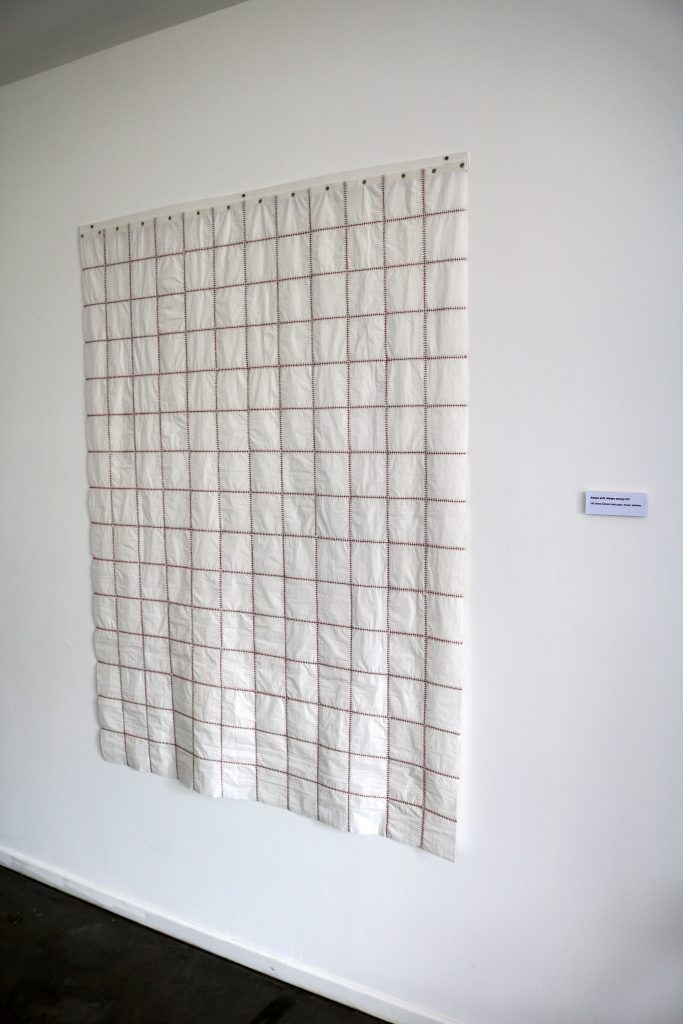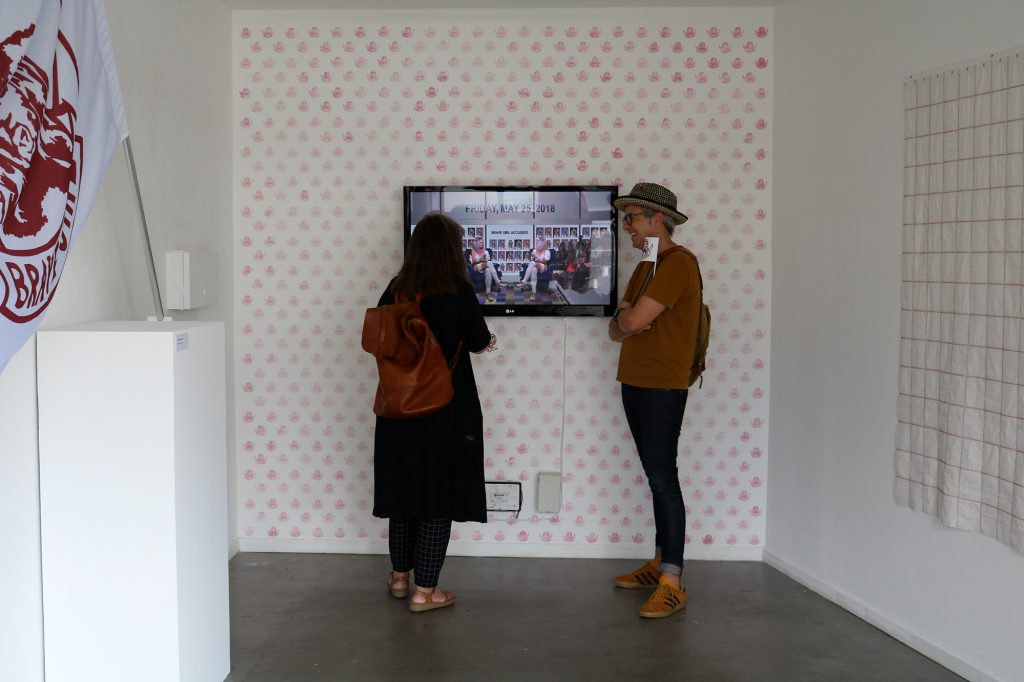Always soft, Always strong was held at Boxcopy ARI in January 2021. The toilet paper quilt-tapestry, which takes the title of the exhibition, was awarded the $5,000 Highly Commended in the 2021 Sunshine Coast Art Prize at Caloundra Regional Gallery.
The exhibition Always soft, Always strong continues my exploration of the Feminine Bravery Construct through my performative persona, Brave Girl. Brave Girl is inspired by cosplay and comic strip characters and is clad in mock super-hero battle costume. When Brave Girl performs, she does so as an exaggerated embodiment of what it means to be an empowered brave woman in the neoliberal context.
The quilt-tapestry, Always soft, Always strong, was hand-sewn through 2020-21; during the peak of the first COVID outbreak in Australia. Sewn from a single roll of Sorbent toilet paper, its materiality reminds us how important toilet paper was to us during this time. The fragility of the toilet paper suggests that the artist was contemplating precarity in making the work—precarious bodies, connections, and the way these are valued/undervalued by society.
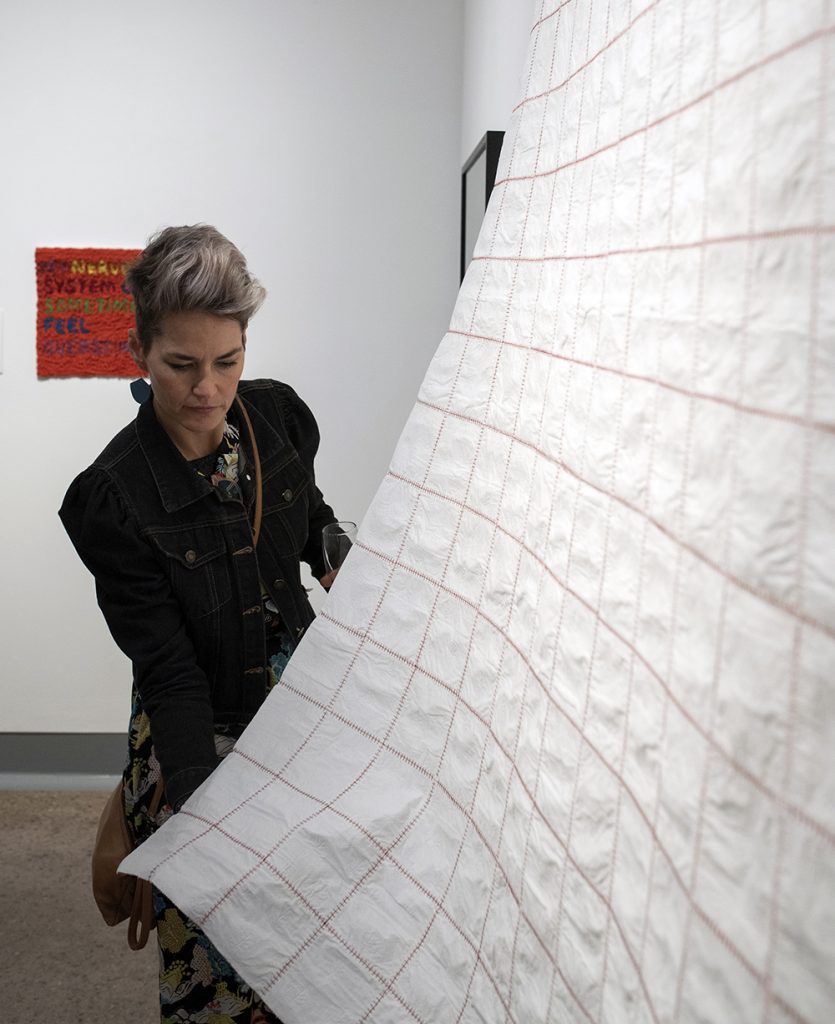
In the 11 months it took to make the quilt-tapestry, I experienced what I describe as ‘a conditioning’. “As I progressed with the sewing, it felt like it was getting easier to sew. The material felt more robust; not so fragile. This led to an expectation of its robustness, and there were consequences for this”. As I learnt to handle the fragile toilet paper sheets, I got better at doing so, and interpreted this as the object(s) being less fragile; more robust. However, the material was, is and remains equally as fragile as it was when I started working with it. I experienced it as more robust through my conditioning.
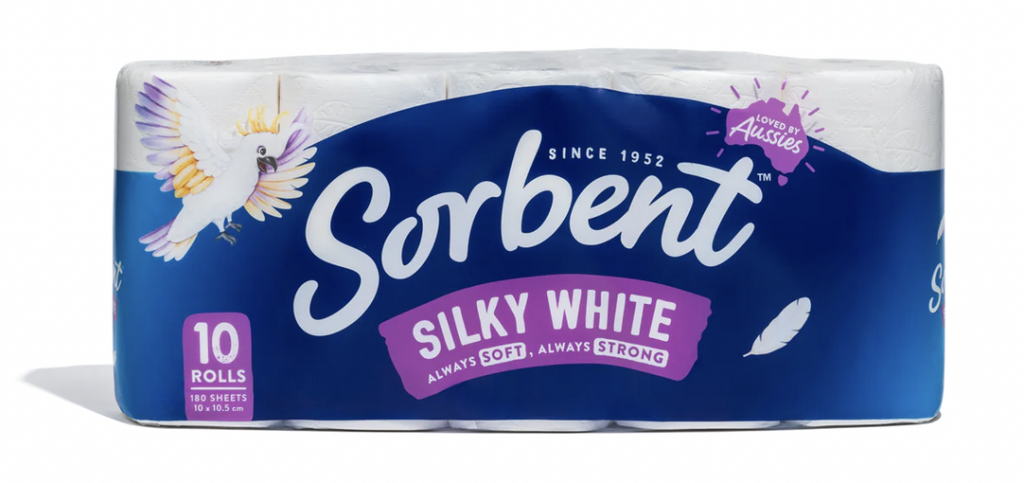
We can think about the feminine bravery construct in this way. We are conditioned to believe that the version of feminine bravery that is expected by, and continuously on display in, the mainstream—one that always soft, always strong—is the only version of bravery that is acceptable. Why is that? Who benefits from this?
It is worth noting that the toilet tissue is white. This is important because it is often the case that the braveries that are most easily commodified and branded are those that become most visible. This means that most of the time, the braveries that are most visible are those which are white, middle-class, cis-gendered, heteronormative, quite often ‘spectacular’, and associated with a trajectory of capitalist “success”.
A second work which featured in this exhibition is Brave Girl Accusers. The conceptual starting point for this work was my research into the celebrity subject, Rose McGowan. McGowan was instrumental in exposing Harvey Weinstein as a sexual predator of the worst kind. McGowan’s revelations that she was raped by Weinstein in 1997 were first published in The New Yorker in late 2017. Following this, she published her autobiography titled Brave in early 2018 where she goes into detail about the rape. To better understand the expectations of feminine bravery in the contemporary context, my research into McGowan explores how, in her public interview appearances between January 2018 and March 2019, McGowan is expected to live up to—and defend—her self-described brave label. The interviews reveal the public’s obsession with the visibility of the ideal, brave, postfeminist woman; and vis-à-vis their objection to (and fear of) her other. McGowan’s eventual, obligatory public containment has been an attempt to control—even extinguish—her revolutionary potency. Brave Girl Accusers is a parody of an amalgamation of these interviews.
Thank you to the Queensland State Archives for providing the opportunity and resources to make Brave Girl Accusers.
Photos: Andrea Higgins and Cooper Brady.
